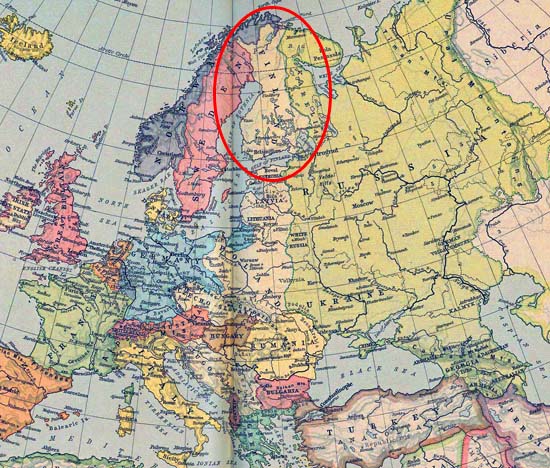|

CHEKA Chairman Dzerzhinsky on the Phone
Russian History 1917
Russian
Civil War Timeline - Year 1917
|
|
For events prior to November 11, 1917, check the
 Timeline of the Russian Revolution of 1917
Timeline of the Russian Revolution of 1917
Photo above:
Feliks Edmundovich Dzerzhinsky - Chairman of the All-Russia Extraordinary Commission
for Combating Counter-Revolution (CHEKA) |
November
11, 1917
(October
29,1917
 old style)
old style)
To
organize a counter-attack in response to the
Bolshevik Revolution,
 Krasnov and his troops wait
for reinforcement at
Tsarskoe Selo, the site of the
former imperial summer palace.
Krasnov and his troops wait
for reinforcement at
Tsarskoe Selo, the site of the
former imperial summer palace.
The
Cadet Uprising.
The cadets of the Petrograd military
schools, i.e. the Vladimir Cadet School and
the Pavlovsky Cadet School, start a revolt,
led by G.P.
Polkovnikov. Among other spots,
they capture the building that hosts the
main telephone center and the Mikhailhovsky
Manege.
Originally,
these guys had planned to sync their attack
with Kerensky's and Krasnov's attack, who
were currently waiting at Tsarskoe Selo, as above
mentioned.
Unfortunately for the cadets, however, Red Guards
captured one of them and made him a canary.
Therefore, the cadets decided to strike today,
too soon it turned out. The Reds put down
this revolt within a day.
November
13, 1917
(October
31,1917
 old style)
old style)
 Battle
of Pulkovo. Kerensky's
counter-offensive fails.
Battle
of Pulkovo. Kerensky's
counter-offensive fails.
November
20, 1917
(November
7,1917
 old style)
old style)
The
Ukrainians form the Ukrainian People's Republic,
also called the Ukrainian
National Republic. They will
declare their independence from Russian on
January 22, 1918.

INDEPENDENT REPUBLIC - THE UKRAINIAN PEOPLE'S REPUBLIC
Click to enlarge
November
25, 1917
(November 12,1917
 old style)
old style)
Today
is the election for the
Constituent Assembly. This
Assembly will write the new constitution for the
Russian people. At least that's the general
idea.
Outcome of the
election
-
Socialist Revolutionary Party - 40 percent
of the vote
-
Bolsheviks - 25 percent of the vote
-
Constitutional Democratic Party ( Kadets),
Kadets),
 Mensheviks,
and Others - smaller percentages
Mensheviks,
and Others - smaller percentages
Long faces among
the Bolsheviks, who immediately claim that this
result does not reflect how people really feel. Many pairs
of raised
eyebrows watch the Bolsheviks argue that instead,
the power should be given to the Soviets. ( What is a Soviet?)
What is a Soviet?)
The Constituent
Assembly will convene on January 18, 1918 (January
5, 1918
 old style). old style).
This gives the
Bolsheviks exactly 54 days to come up with Plan
B. And they won't miss a beat.
End of November
1917
(Mid November 1917
 old style)
old style)
The
Bolshevik government declares the Constitutional
Democratic Party illegal and orders the arrest
of leading
 Kadets.
Kadets.
December 2, 1917
(November 19,
1917
 old style)
old style)
 Kornilov and others escape from prison in Bykhov.
Kornilov and others escape from prison in Bykhov.
December 6, 1917
(November
23,1917
 old style)
old style)
Finland
declares its independence from Russia. Here is
the map.

NEW STATE IN CENTRAL
EUROPE - THE REPUBLIC OF FINLAND
Click to enlarge
December 15, 1917
(December 2,
1917
 old style)
old style)
WWI Armistice between Russia and Germany.
December 20, 1917
(December 7, 1917
 old style)
old style)
The
Bolshevik government establishes its secret
police, the VCHEKA, which
is short for All-Russian Extraordinary
Commission for Combating Counterrevolution and
Sabotage, only in Russian.
Feliks
Edmundovich Dzerzhinsky is
appointed comrade in charge, see photo top of
the page.
Also called CHEKA,
or VECHEKA, this is the early KGB. Dzerzhinsky
will soon impress with his skills in efficiently
setting up and running concentration camps.
Dzerzhinsky's
nickname was Iron Felix. And speaking of
names of all the best wrestlers. Stalin
derives from the Russian stal, meaning
steel. Molotov derives from the Russian word
molota, meaning hammer. And Kamenev
derives from the Russian word kamen,
meaning stone.
December 23, 1917
(December 10,
1917
 old style)
old style)
The
Moldavians declare their independence from
Russia.
December 31, 1917
(December 18,
1917
 old style)
old style)
Russia
recognizes Finland's independence.
More History
|